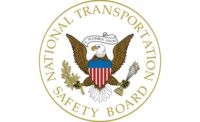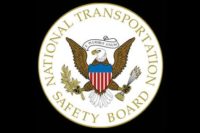Train derailment kills horses, sends toxic chemicals into river

Flooding caused by heavy rainfall is one of the possible causes of a fiery train derailment earlier this year that killed and injured horses and leaked high-hazard, flammable chemicals into the environment, including a nearby river.
A preliminary report issued by the National Transportation Safety Board (NTSB) says 25 tank cars of a Union Pacific Railroad train derailed near Fort Worth, Texas on April 24. The derailment resulted in the breaching of at least three tank cars that leaked approximately 74,000 gallons of denatured alcohol which subsequently ignited. Some of the product entered a nearby tributary of the Trinity River. No people were injured in the accident. However three horses died and three horses were injured.
The 25 derailed rail tank cars, numbers 17 through 41 in the train, included:
- Seventeen DOT-117R100W retrofitted CPC-1232 tank cars. All were equipped with jackets, head shields, bottom outlet valve operating mechanisms designed to keep valves closed during derailments, top fittings protection and ceramic-fiber thermal protection blankets. Some of the tank cars had 7/16-inch thick heads and shells, others had 1/2-inch thick heads and shells.
- Seven DOT-117J100W tank cars with 9/16-inch thick heads and shells, equipped with jackets, head shields, ceramic-fiber thermal protection blankets and top and bottom fittings protection.
- One DOT-111A100W tank car with 7/16-inch thick head and shell, with no jacket, no thermal protection, no head shield and no top fitting or bottom outlet protection.
At least three of the 25 derailed tank cars breached including two DOT-117R100W tank cars and one DOT-111A100W tank car.
The cause of the derailment remains under investigation and NTSB investigators plan to return to Texas to more closely examine additional tank cars involved in the accident to assess damage and look for breaching. Some tank car parts were shipped to the NTSB Materials Laboratory for examination.
Heavy rainfall occurred during the evening of the accident and a large amount of water from nearby Lake Echo flowed through the railroad right-of-way. The ongoing investigation will examine safety issues including effective weather alert communications, policies and rules as well as inspection and maintenance of storm water drainage from lakes.
Information in the report is preliminary and may change or be supplemented as the investigation progresses, as such, no conclusions about probable cause should be drawn from the preliminary report.
According to data from the Association of American Railroads and the Railway Supply Institute Committee on Tank Cars, while 55 percent of the rail tank cars carrying ethanol meet the DOT-117 standard, the remaining 45 percent of the fleet are the less-robust DOT-111 and CPC-1232 rail tank cars. Although the Fixing America’s Surface Transportation Act of 2015 (FAST Act) sets a phase-out schedule for DOT-111 and CPC-1232 rail tank cars, the NTSB’s 2019 – 2020 Most Wanted List of Transportation Safety Improvements includes the item Ensure the Safe Shipment of Hazardous Materials, which incorporates NTSB safety recommendation R-15-016, which seeks an intermediate progress milestone schedule for the replacement or retrofitting of legacy DOT-111 and CPC-1232 rail tank cars.
Looking for a reprint of this article?
From high-res PDFs to custom plaques, order your copy today!






